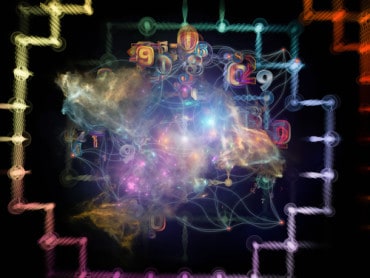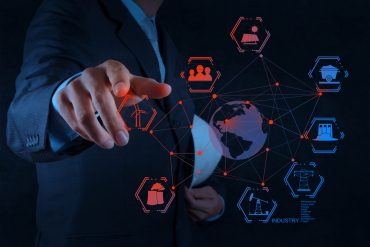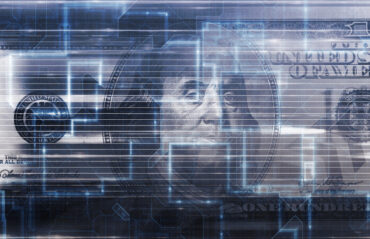
Can an industrial metaverse supplement the digital transformation manufacturers are already going through?
We might be tired of hearing about the metaverse already, but as Bloomberg Intelligence predicts, investment and value will only grow in the coming years—as much as $800 billion in value by 2024. That would be happy news to Facebook’s ears, considering their recent attempts to take ownership of the “metaverse” term and its next-generation implementations in the business-to-consumer (B2C) space.
But there’s an entirely different reality afoot for the industrial metaverse, which aims to bring digital-first experiences to a process that’s inherently physical by nature. This takes digital transformation and “Industry 4.0” to a whole new level. Instead of bringing machines online via IoT or building digital platforms that help them perform predictive maintenance asset monitoring remotely, the industrial metaverse starts with a digital experience that can then translate to their physical operations.
Watch Video Now: Digital Complexity and How to Address ItUnderstandably, many manufacturers are skeptical about the value they could possibly get from engineering digital parallels of their plant floors or oil rigs. Can an industrial metaverse supplement the digital transformation they’re already going through, or do they need to get ready for another sea change in manufacturing?
See also: Metaverse Chatter Abounds, But Reality is Elusive
A metaverse for workforce training
In the industrial metaverse, companies train new hires in a digital replica of the plant floor where they’ll eventually work. Manufacturers are freed from many of the constraints that make training difficult, like getting trainees into one place at the same time or dealing with potentially hostile environments. Recruits can learn from home, even in teams, while they solve problems and work on complex tasks without disrupting live operations or distracting mission-critical talent.
Virtual environments also have an edge in training for edge cases, unpredictable events, or less-than-ideal conditions. Training programs could be designed with a degree of randomness, throwing in bad weather or equipment failure, while still having an instructor on hand to lead trainees through, deepening their ability to react while eliminating risk. It’s similar to how airline pilots train in simulators for worst-case scenarios, like equipment failures, that companies can’t safely replicate on real equipment.
Training seems the most likely candidate for early adoption within the industrial metaverse, as it delivers immediate impact for manufacturers without having to finish a plant- and operations-wide digital transformation process first.
Augmented reality
Unlike the fully-fledged virtual reality (VR) that you’d likely see in training via the industrial metaverse, augmented reality (AR) leverages technology like Microsoft’s HoloLens to display information on top of the physical space around them. Some manufacturers are already using AR for training purposes and giving technicians “head’s up” information about their operations.
For example, a maintenance employee performing a complex maintenance procedure could see each step visualized and mapped onto the equipment through an AR headset. More contextual information, delivered at just the right time, reduces the risk of error and speeding up their process—no more listening to a co-worker barking directions or going back-and-forth between manual and machine. They could even have a virtual assistant guiding them through the protocol step by step.
Download Report: Why Continuous Intelligence? Why Now?With or without aid from the industrial metaverse, AR is here to stay—a bevy of new technology startups are delivering new ways to enhance the physical manufacturing experience with insights from real-time data analytics or comprehensive standard operating procedures.
Digital twins and the metaverse
Any object in a manufacturer’s operations—a single product, a machine, or an entire plant—can be virtualized through enough modeling and real-time data. By creating a virtual representation of a physical object, plus an ongoing stream of new information about its status, digital twins give manufacturers unprecedented ability to see how something is performing right now and simulate or predict how it might perform in the future.
They can engineers troubleshoot remote equipment, run simulations based on real-world data and not just assumptions on the conditions, identify potential quality faults before they cause scrap or rework, differentiate your products from a competitor’s, and give executives or plant managers unprecedented vision into the state of their operations from both a bird’s eye and granular view.
The digital twin concept has existed for roughly two decades, but the rise of the industrial metaverse should give it renewed life. For example, digital twins could enhance otherwise static VR training sessions with real-life data for a more “hands-on” experience.
Continuous simulation
The industrial metaverse feeds off of real-time data. If a manufacturer were to implement any of the last three use cases, they’d likely find themselves with more streaming data than they knew how to analyze in the present. Enter continuous simulation, which draws on real-time data from digital twins and human-machine interfaces to continuously ask “what if” questions about production.
Imagine being able to generate contingency plans or alternative processes thanks to ongoing simulations of scenarios your team might have never thought of, or continuously optimize a stable system with new inputs and configurations. These simulations can be either fully automated or triggered based on specific real-world conditions to find improvements passively or push toward specific goals or KPIs.
Continuous simulation has the potential to bridge digital transformation, real-time analytics, predictive AI/ML, and for manufacturers with a strong culture of continuous improvement, it’ll feel like a must-have once they’ve buttoned down the technical requirements.
And with these trends, the industrial metaverse seems to be just getting started. There are wins to be had with customer experience, supply chain transparency, disaster recovery planning, and discovering new ways to pitch legacy products to demanding audiences. For those who invest early and follow the trends that offer real value—not hyperbole—there’s an edge of advantage to be found in making small optimizations today’s processes in search of tomorrow’s sea change.
Watch Video Now: Digital Complexity and How to Address It





